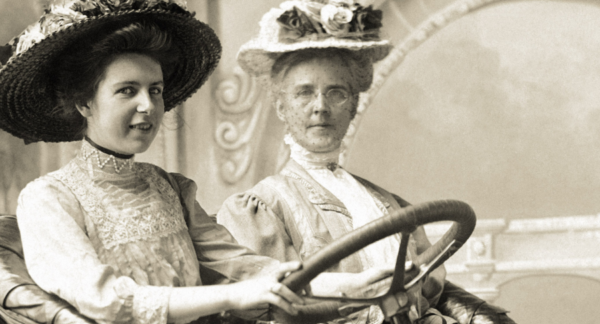Women’s Addiction – “Pink Flags” for Moms Who Need Wine

A walk in the park with friends sans sippy cup!
I met with a thirty-something therapist last week who said she was concerned about her peers and their drinking habits. The “Moms who Need Wine” crowd, Starbucks cups filled with iced KJ at the soccer games. Play dates replete with chardonnay and imported cheese. Even baby-carriage walking groups with iced wine in the cup holders. And during the pandemic? Straws fit under masks.
It got me thinking about the fact that women, especially younger women, are self-medicating the stress of motherhood, working, and the pandemic. Likewise, they might benefit from a bit of advice from someone who’s been there/done that. I call them “pink flags”. Those warning signs of women’s addiction, not quite red, I know now, I wish I had known then.
No Judgement Here…
God knows, I’m not being judgmental. When my children were young, I committed every offense my above colleague listed as concerning. In fact, if there had been such a thing as a Facebook group called “Moms Who Drink and Swear” fifteen years ago, I would have been on the board of directors. (1 million followers on Facebook.)
It took me about ten years to progress from alcohol misuse into a full-blown substance use disorder. My divorce was the catalyst, but I was well on the way to addiction before the papers were signed. My drinking was not the cause of my divorce, but it was certainly a mitigating factor.
Ignoring the Signs
For years I ignored the signs. I under-reported my drinking and even filled the wine bottle with water if it seemed like my watchful husband would notice how much I was drinking. I don’t remember this part per se, but my children and ex-babysitter tell me I had a repair kit in the garage. It consisted of a quart-sized baggy with sandpaper, a black felt marker and a jeweler’s hammer. Apparently, I operated a sort of illegal bump shop to make interim repairs to any car I drove. Because I drove tipsy, scratched and gouged, and misjudged hazards, and I didn’t want my husband to know I had damaged another car door or rear-view mirror.
What is a Substance Use Disorder?
The criteria for a substance use disorder (SUD), according to the Diagnostic and Statistical Manual (DSM), occurs “when the recurrent use of alcohol and/or drugs causes clinically and functionally significant impairment, such as health problems, disability, and failure to meet major responsibilities at work, school, or home”.
A diagnosis of substance use disorder is based on evidence of impaired control, social impairment, risky use, and pharmacological criteria. [And it] may include problems controlling intake of alcohol or other drugs, continued use despite problems resulting from drinking or using, development of a tolerance, drinking or using that leads to risky situations, or the development of withdrawal symptoms.
Diagnostic and Statistical Manual (DSM – 5)
In a nutshell, “addiction” means the substance use becomes more important than anything else, and the use is continued despite the negative consequences.

Precious cargo on board!
Here’s the kicker for moms who need wine…
For women, heavy or problematic drinking is defined as 8 or more drinks per week. A “drink” of wine is 5 fl oz. I don’t know about you, but I used to fill my wine glass to the rim. By my non-scientific calculation, that is more like 11 oz. And moms who drink wine rarely stop at one. And for women, “binge drinking” is defined as 4 alcoholic drinks on one occasion.
Women’s Addiction – a Compass, Barometer or Alarm
If only there was a way to know when substance use was about to become a disorder. If I could invent a compass or a loud alarm at the cusp of addiction there would be a parade in my honor. Alas, there are only warning signs, “pink” flags and education on the prevention of SUDs.
The Surgeon General’s Report on Alcohol, Drugs & Health says, “The clear implications of these data are that a comprehensive approach to reducing the misuse of alcohol and drugs—one that includes the implementation of effective prevention programs and policy strategies as well as high-quality treatment services—is needed to reduce the problems and costs of substance misuse in the United States. In fact, greater impact is likely to be achieved by reducing substance misuse in the general population—that is, among people who are not addicted—than among those with severe substance use problems”
So, this article is really just doing what the Surgeon General told us to do – attempting to reduce substance misuse in women who are not addicted yet.
A Few Facts About Women’s Addiction
Women are closing the gender gap
- An estimated 5.4 million women (over the age of 12) in the United States have an SUD
- Women are the fastest growing population of alcohol and drug users
- 57% of all the wine sales in the US are by women
Both men and women say “stress” is the primary reason they drink
- Alcohol is often used as “medication” for anxiety and depression
- But women are twice as likely as men to experience anxiety and depression. During the pandemic, women have experienced more childcare requirements and household demands than their male counterparts. Even when working fulltime jobs outside the home.
- Women are exposed more often to the type of trauma that results in SUDs (rape, child abuse, spousal violence)
- Women have unique social pressures and influences, including social media, advertising, and peer pressure
The stigma of an SUD is still greater for a woman
- Women are still the primary care givers for children
- And use alcohol to “cope” with the stress of motherhood
- The years when there are young children in the house are the easiest years to hide misuse of alcohol and to justify not getting treatment
- Only 33% of those in treatment for a SUD are women
- Gender specific programs are most effective for women
A woman’s path to addiction is faster than a man’s
- It’s called telescoping – from first use, a woman has an accelerated path to addiction
- Basic biology tells us that women can’t drink like a man
- Women blackout more than men
- Pound for pound women’s bodies have less water than a man’s, so there’s higher alcohol content in the bloodstream
- Women are more susceptible to heart disease, liver damage and breast cancer
- And women have unique issues associated with reproduction and pregnancy
- Women often enter treatment with more medical, behavioral, psychological, and social issues than men
Here’s the good news…
- There are more dissenters to “moms who drink” in 2021, and more conversation on the subject
- Women who receive treatment for a SUD tend to fair better than men
- Women relapse less frequently than men
- They are more likely to stay abstinent over long periods of time
- With greater gender specific research and specialized programs, women who seek treatment have a good prognosis for recovery

Healthy activities for moms and children, like walking, decrease women’s addiction and build better relationships!
5 “Pink” Flags
If stress is a factor in drinking, and women buy the lion’s share of wine, and women and children have play dates, and women feel the need to spend quality time with adults while the children play, it is understandable that drinking and motherhood might go hand-in-hand. And no one is saying you can’t have a drink with your friends if you want one.
But 1 in 12 people develop a substance use disorder, and there are some things to watch for when drinking with peers – especially around the children. Here they are:
1. Do Not Ignore the Negative Consequences
I’m not talking about your significant other sitting you down and telling you, “I’m leaving you if you don’t stop drinking.” That’s further down the road to addiction. I am thinking about the more subtle concern. Perhaps your spouse asks the question, “What happened to the car? There’s another dent in the door.” When the signs are there, take a moment and take stock. Try to answer those concerned questions honestly.
2. Driving Tipsy is Driving Drunk
Have you seen those police billboards that say, DRIVING TIPSY IS DRIVING DRUNK? If you go to your child’s soccer game with a sippy cup, do not drive yourself. And certainly, do not load the kids and the neighbor’s kids into the car and drive them home afterwards.
And while I’m at it, try not to use euphemisms for alcohol or drinking paraphernalia. Sippy cup, mommy juice, mother’s little helper. Words have power. And the fact is, you are secreting wine in a Starbucks cup with a top and taking it to your child’s school. When is that a good idea?
3. Be Aware if You Drink More or Differently Than Your Friends
Or if someone in your crowd always seems to need to “be taken care of” when she starts drinking. I’ll tell you another story (if you promise not to think less of me). When my children were young, we had a foursome of moms who went to lunch together. We’d have a glass of wine each and share a second. My friends would go home and “sober up” get work done and not think about drinking during the day until the next outing. I, on the other hand (and it began ever so slowly), went home and poured another.
4. Do Not Schedule Yourself Around Substance Use
Your partner and the children come to you on a Sunday afternoon and want to go for a hike, and you bow out. Not because you think they all need one-on-one time together, even though that’s what you say. It’s because if you go hiking at 3, you’ll miss your 5 o’clock (wine o’clock) glass of plonk. Dangerous behavior – dark pink flag.
5. If You are a Heavy Drinker, Watch Out for Triggers
For me it was my divorce. But it can be the death of a loved one, a job loss, a worldwide pandemic, even feeling slighted. When you are a heavy drinker, an emotional trigger can push you over the edge. Seek professional help if you are feeling vulnerable.
That Wasn’t So Bad…
I promise you I am not some modern-day Carrie Nation wielding an ax at your good time. But I do believe that awareness is your best strategy for prevention of a substance use disorder. If you stop and think before you get in the car after that second glass of wine. Confront a friend who is drinking more and differently than the others. If you face stressors soberly. And most of all, if you are not afraid to ask for help when things are getting a little rocky. Subtle changes in habitual behavior can make a large impact on the rise of women’s addiction.



